Equities

When your day starts with a 5am alarm to get the first flight out of London to Frankfurt, early-hour brain fog might cause you to question your investment thesis as an equity manager. Why are we travelling around Europe, often to its most undiscovered corporate corners, in search of investment opportunities, when major markets like the S&P 500 Index are breaking new all-time highs month after month?
Trust us, we wouldn’t be getting those early flights for nothing – there are some very good reasons to be hunting out Europe’s most promising small-cap gems.
The monumental rise of the Magnificent 7 has resulted in the market capitalisation of seven US companies having a combined worth greater than that of Europe’s seven leading economies. Nvidia alone has the same market capitalisation as the UK, Microsoft is worth more than France, and Apple far exceeds Germany (see chart 1).
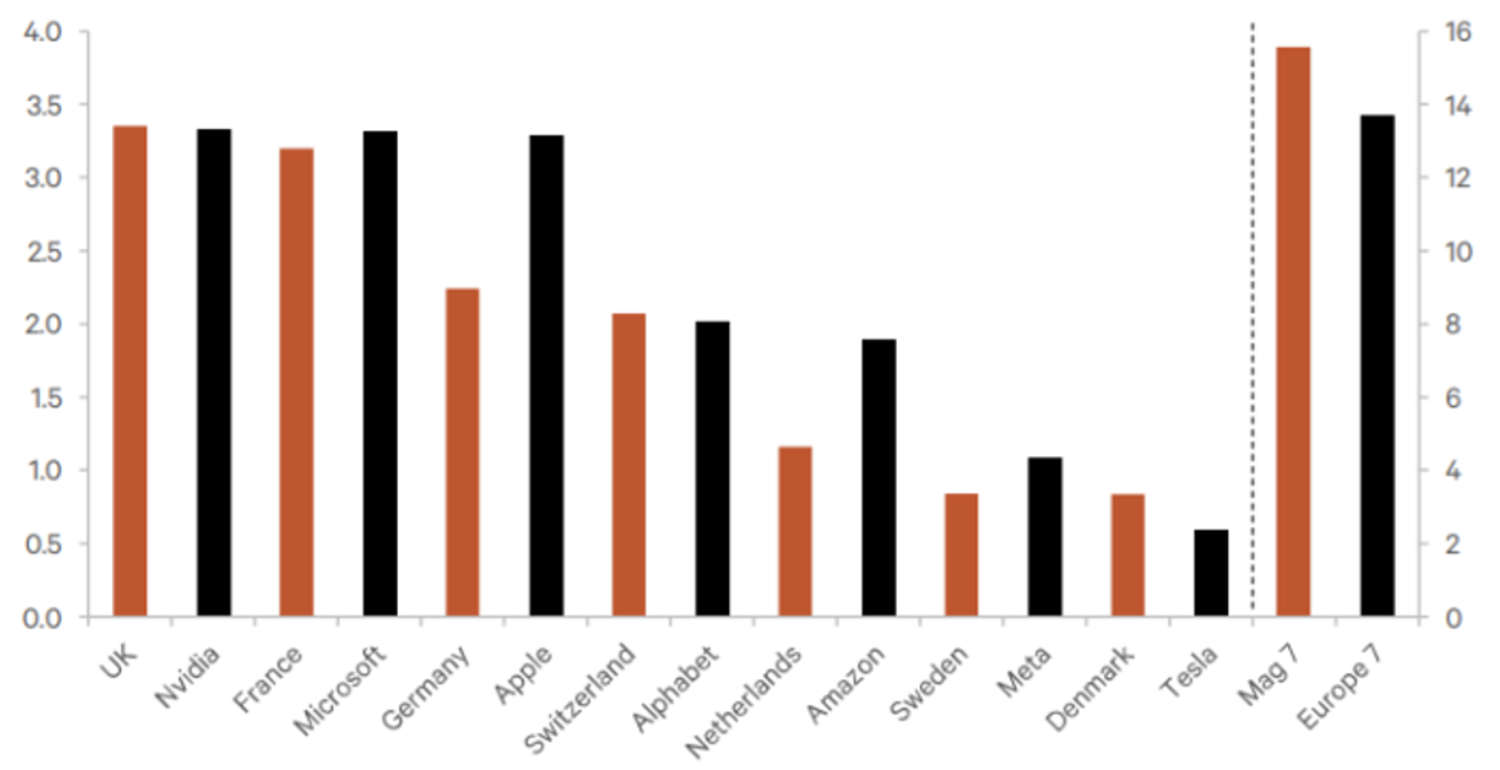
While impressive in magnitude, the dominance of a handful of names has created huge concentration risk within US equity markets; any misstep by those mega-caps could have monumental consequences.
With prudent investors seeking diversification, you might instead look across the Atlantic for opportunities in Europe’s large-cap markets. But while not as acute as the US, concentration risk is also a problem there. The 50 largest companies in the EUROSTOXX 600 Index account for 63% of total market capitalisation, echoing the US-fueled ‘big is best’ rhetoric (see chart 2). Notably, this is the same level of concentration as we saw just ahead of the Lehman Crisis and the bursting of the Dot Com Bubble.
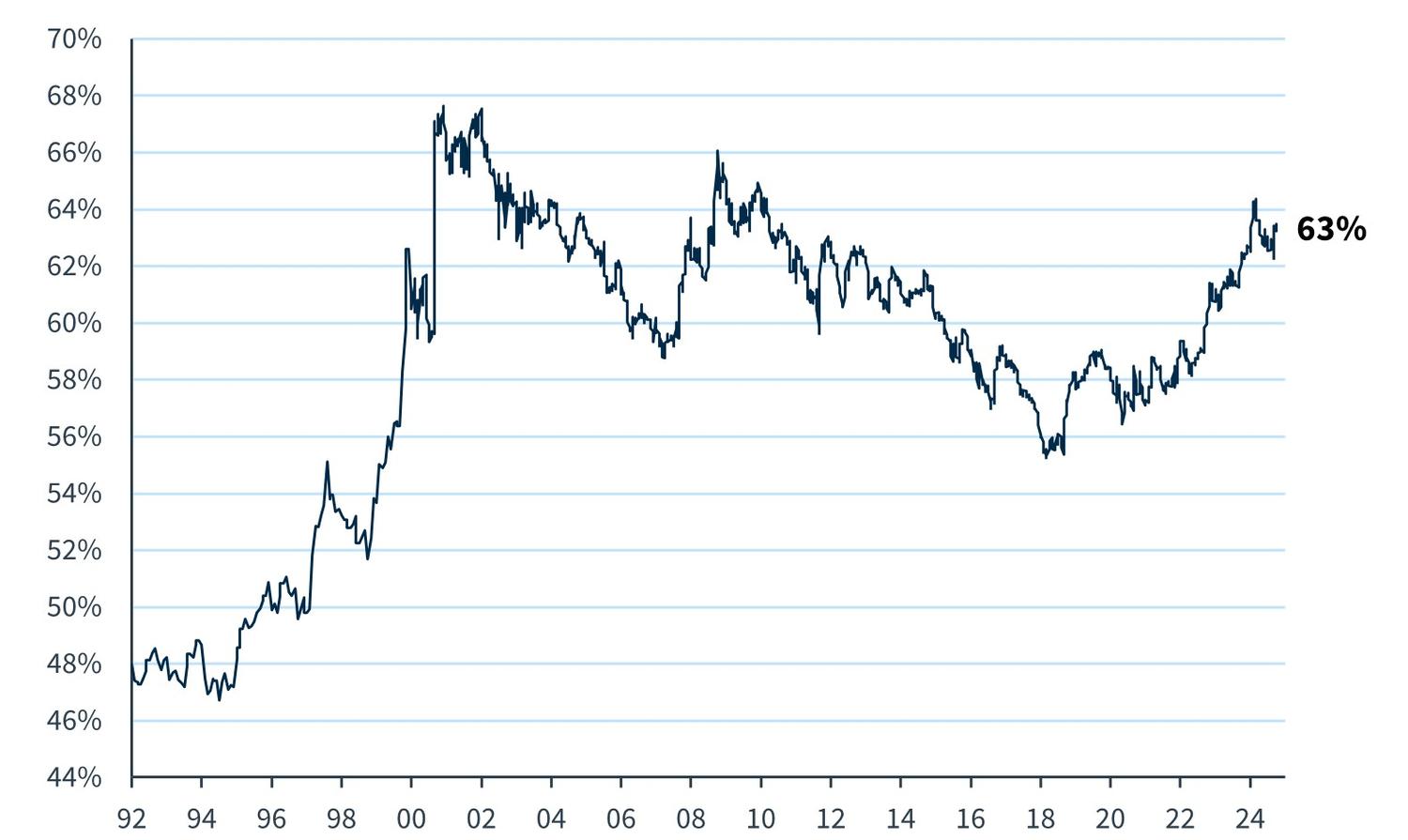
To achieve true diversification in your equity portfolio, we believe Europe’s small and mid-cap (SMID) market is the place to look. The asset class has suffered three years of underperformance relative to large caps – its longest losing streak on record – but typically, after a period of underperformance, small caps bounce back strongly (see chart 3). We believe the best way to capture this compelling return opportunity is to go off the beaten track and unearth Europe’s hidden small-cap gems.
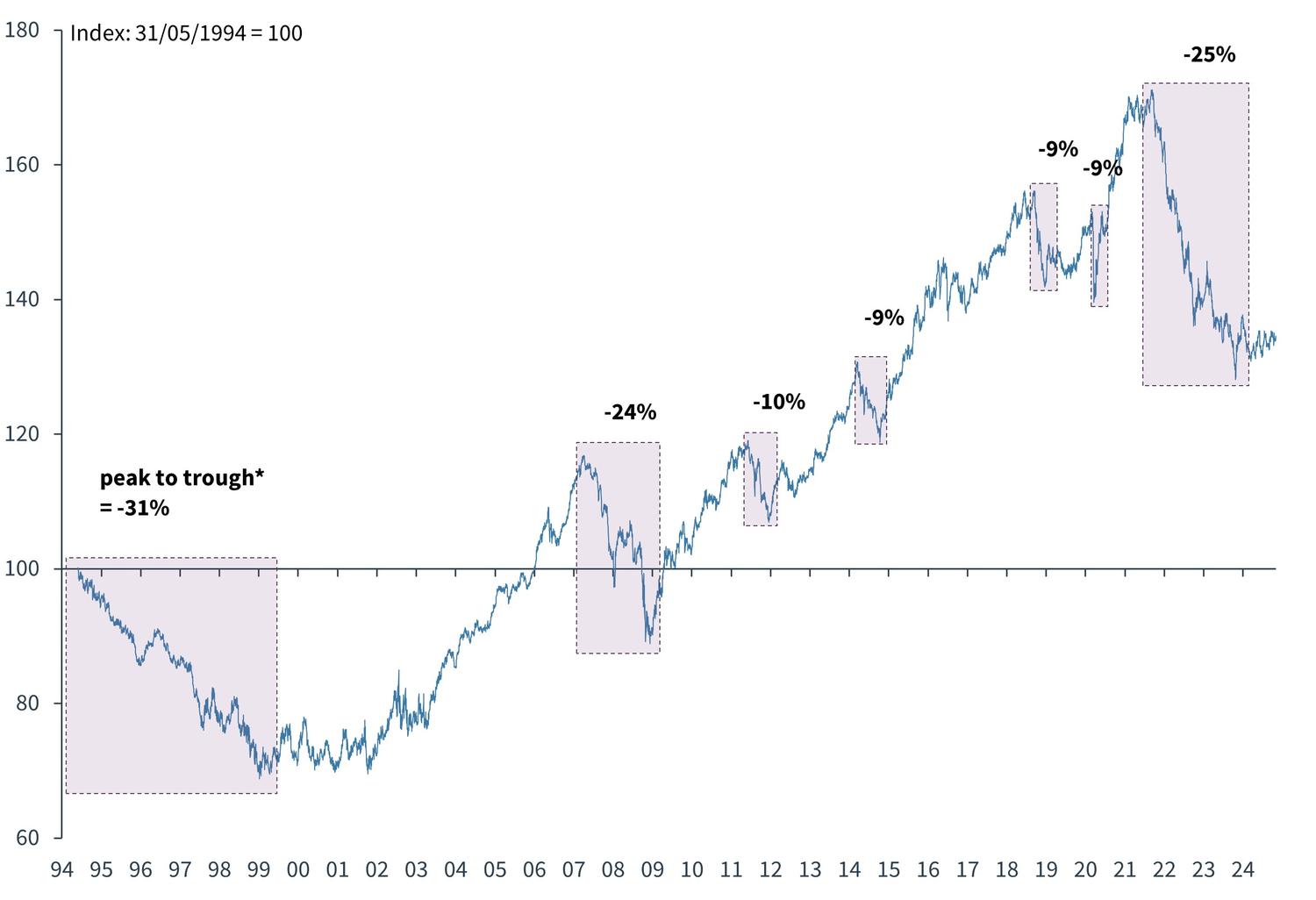
But before we start to journey down the road less travelled in search of stocks, we should address why we favour European SMIDs over small and mid-cap opportunities in the US.
As the global macroeconomic environment shifts towards its next phase, both markets offer positive return potential, but we believe the metrics are particularly compelling for Europe. For example, the discount on the relative 12-month forward-looking P/E of the MSCI Europe SMID Cap Index versus MSCI US SMID Cap Index is -34%, versus an average discount of -18% (see chart 4). When looking at relative 12-month trailing price-to-book value, the discount is -41%, versus a historical average of -21% and notably larger than during the Dot Com and Lehman crises (see chart 5).
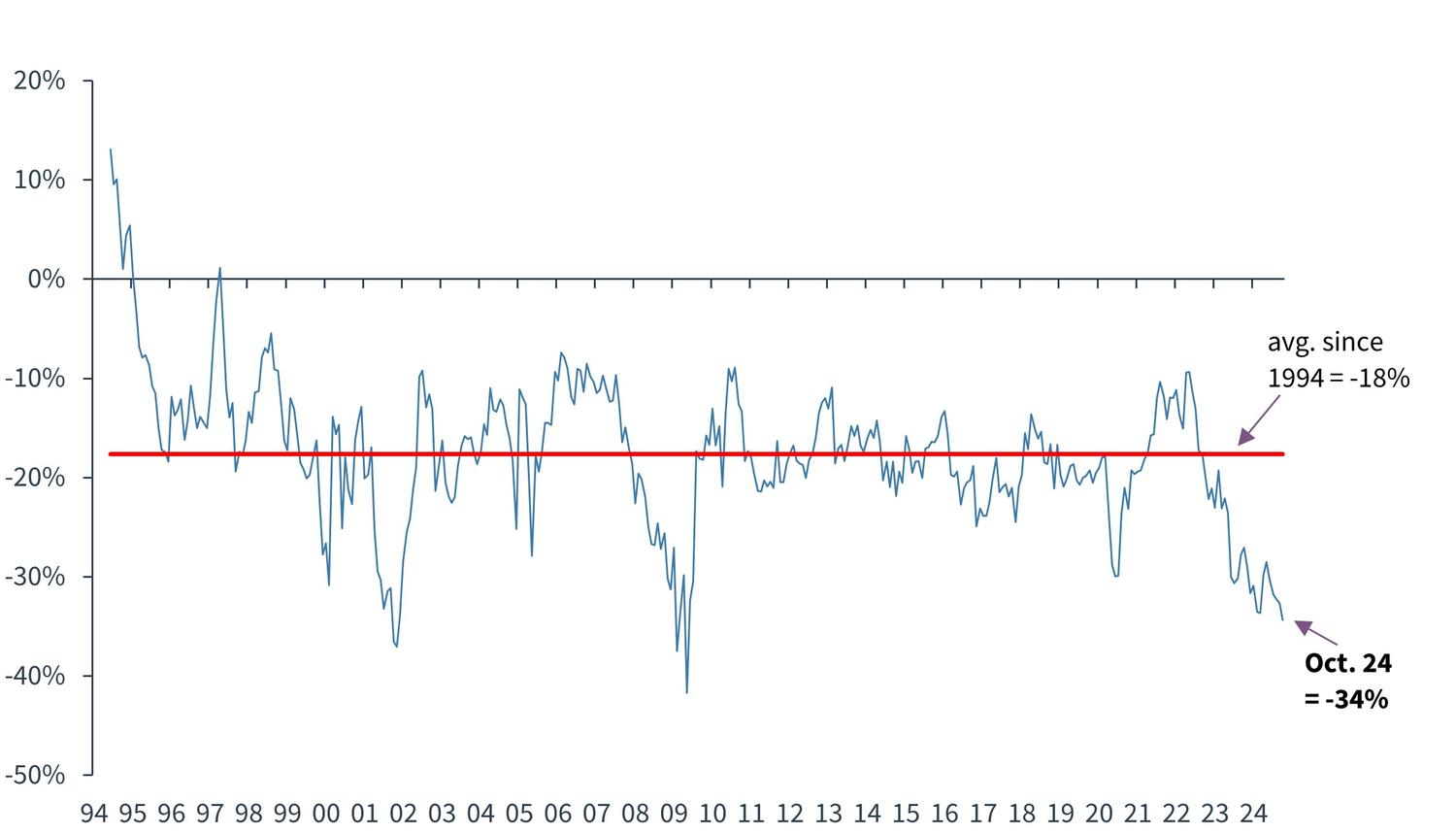
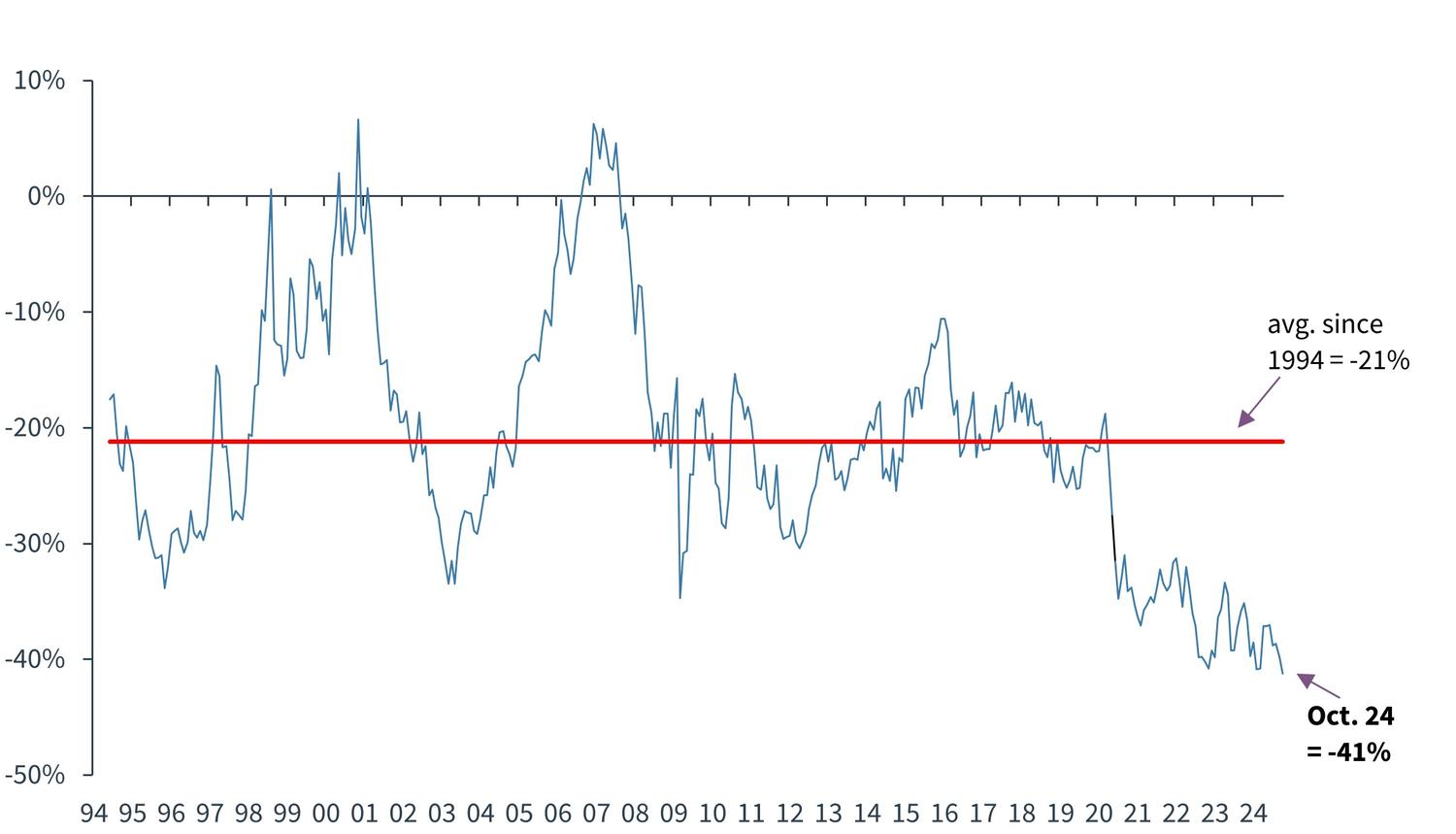
So, we have metrics at crisis levels, but that’s mismatched with the macro picture. Europe has suffered through its worst macro environment in decades: over the last few years it has endured war on the Continent, a supply shock, an inflation shock, the energy crisis, a rapid rate tightening cycle and surging wage pressure, yet it is now moving away from crisis towards recovery.
Interest rate cuts are a particularly important driver of Europe’s recovery and catalyst for SMID outperformance. Smaller companies typically operate on shorter-term financing, such as bank loans with floating rates. While their large-cap peers can lock in fixed-rate loans, insulating their balance sheets for rate fluctuations, rapid hikes through 2022/2023 directly impacted SMID companies’ bottom lines. But with the peak in rates behind us, this headwind is turning into a tailwind, with every cut having an immediate positive impact on SMID balance sheets.
We believe Europe has proven resilient in the face of multiple potential crises and macro factors are now trending positive, meaning today’s extreme valuation discounts present a unique investment opportunity and give European SMIDs the edge over their US peers. To quote Magnus Soderlind, President & CEO of Bergman Beving:
“Diamonds are formed under pressure. We had some tough market conditions during the last quarters, but we have used that to improve the efficiency of many of our companies and prepare them for a better market in the future.”
His words highlight the resilience of European SMID businesses, which tend to emerge from crisis periods leaner, stronger and more agile than their large-cap counterparts. And this is the reason our alarms are ringing at 5am.
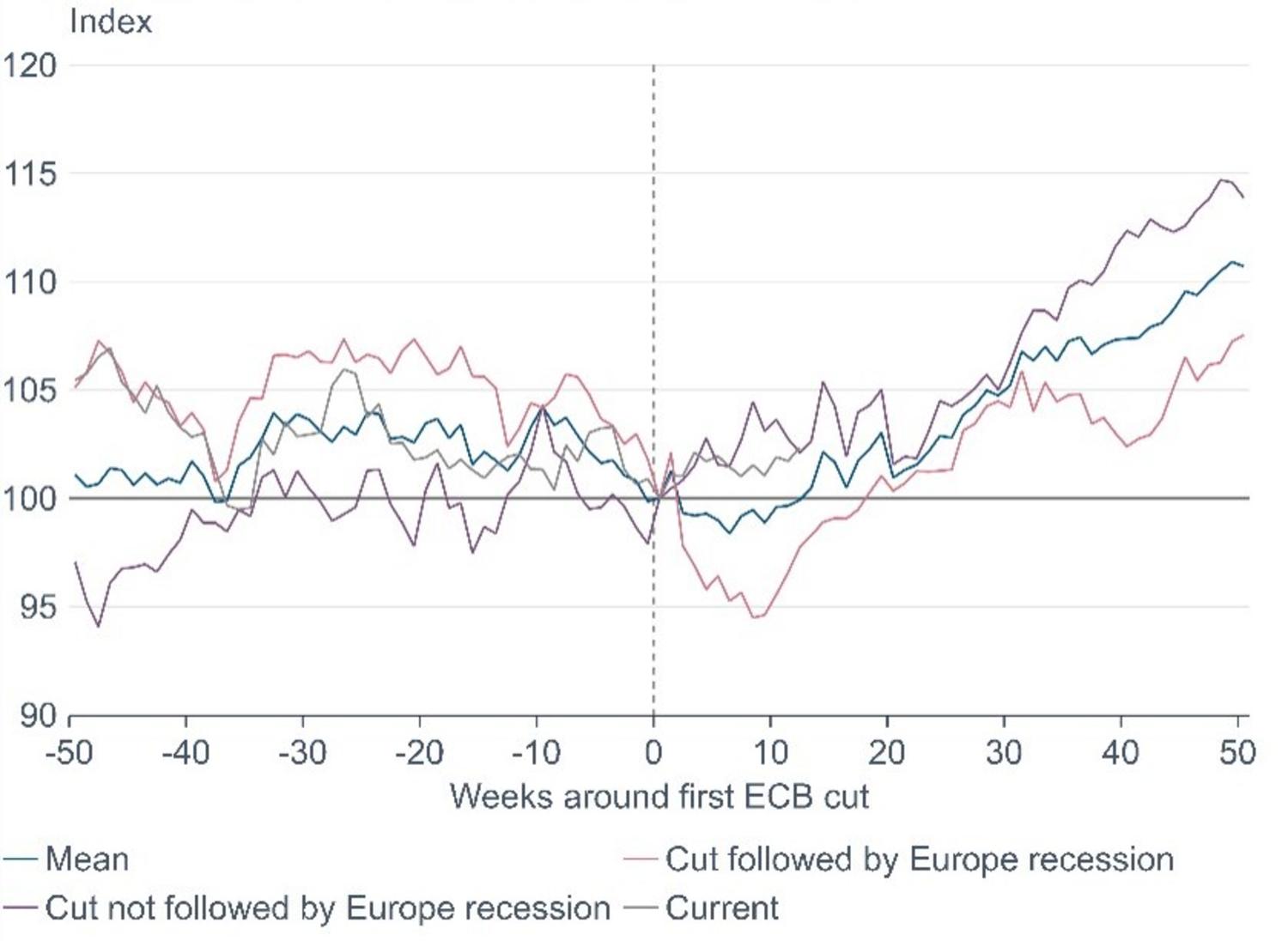
Getting the best from the European SMID universe means serious legwork. Our approach is to look where others don’t, scouring the c.2000 stock universe for true small-cap names (<EUR2bn market cap) that fly below the radar of mainstream investors. Where the average SMID company might be covered by 10 analysts, the ones we are looking at are only covered by a handful (see chart 7). This information gap creates inefficiencies in the market that we aim to take advantage of to drive superior performance.
These small companies aren’t visiting investment hub cities every quarter to push their credentials on the fundraising trail. We have to search to find them – and they’re often in places you (and we!) have never heard of. But walking Europe’s less travelled investment roads leads us to discover its hidden champions – there are many highly innovative companies out there that are dominant in niche markets and run by exceptional management teams. Once we find such a company, we then look for signs of transformational change in its market that could provide a catalyst for higher risk-adjusted returns versus larger companies – the famous ‘small-cap effect’.
With Europe’s macro headwinds turning into tailwinds, SMIDs being poised to bounce back from their run of underperformance, and our preference for the smallest, most undiscovered names out there, we are expecting to see double-digit outperformance, illustrating that small can indeed be beautiful when it comes to investing.
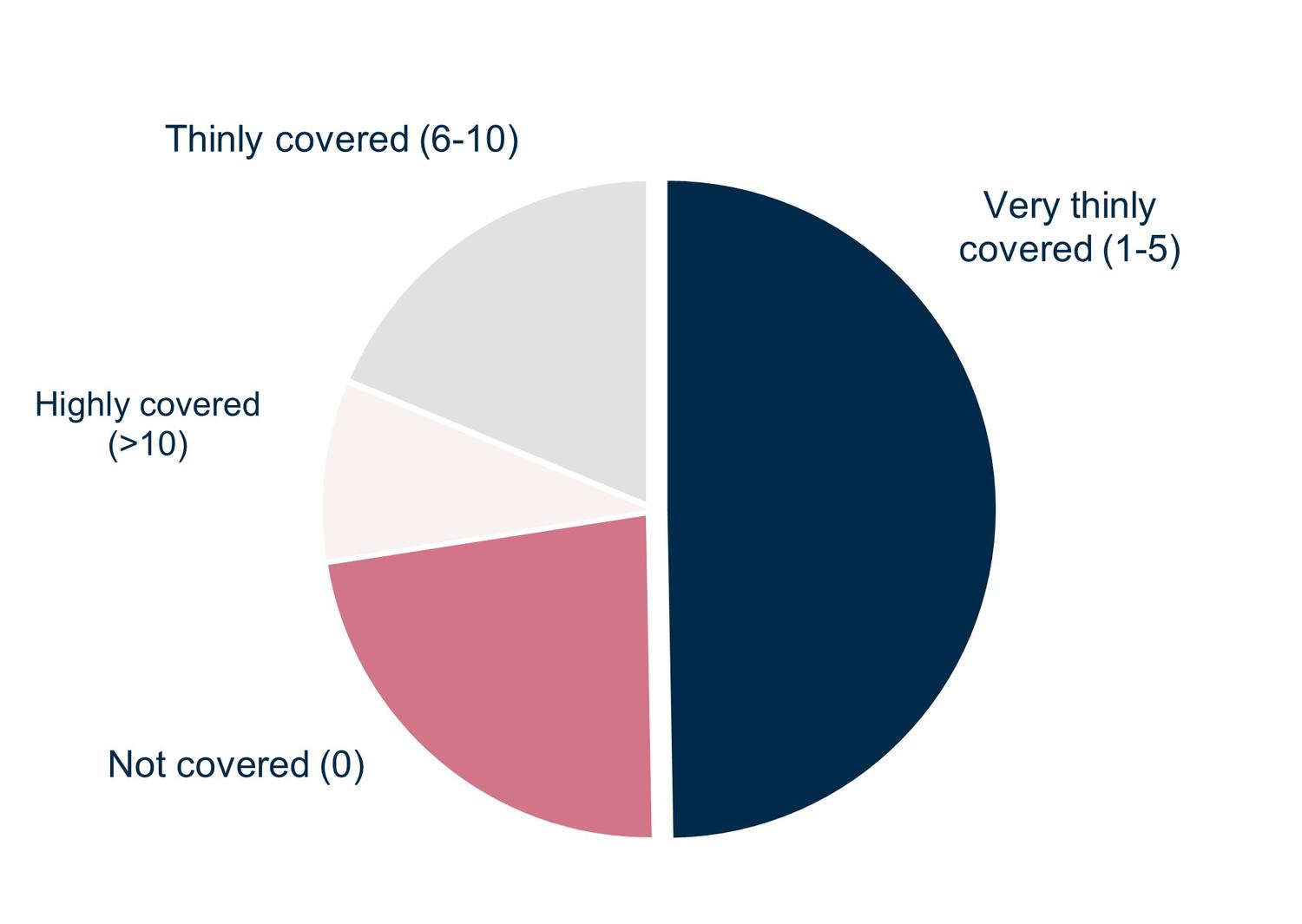
Continuer vers
Equities